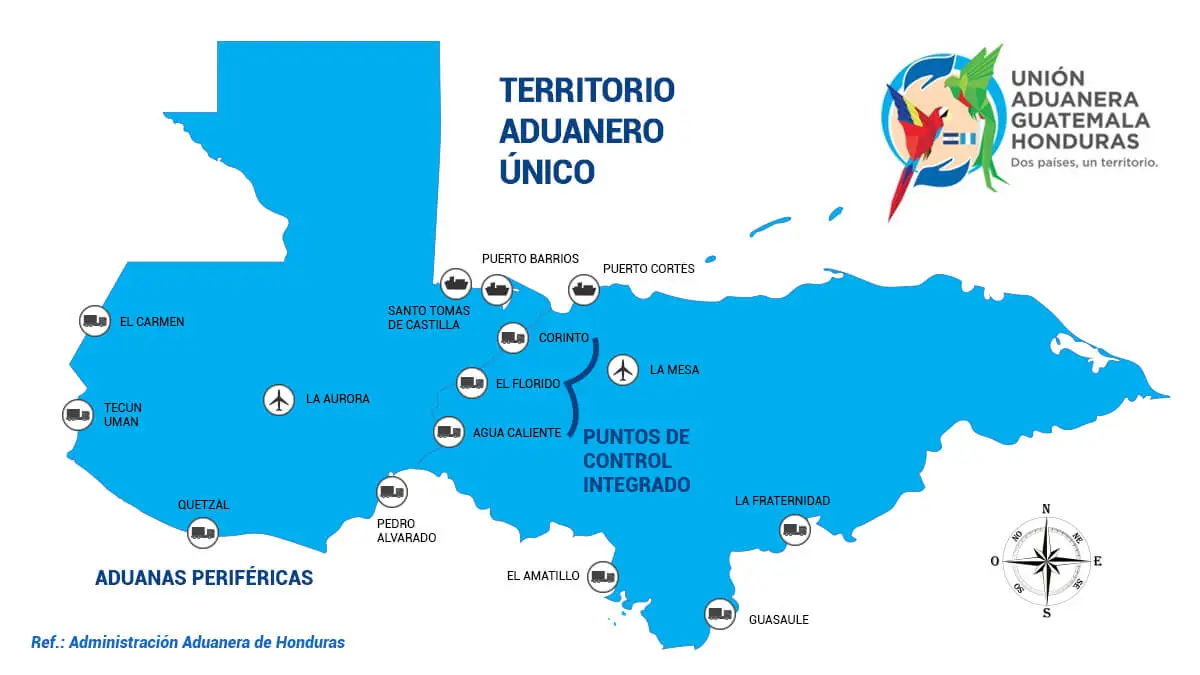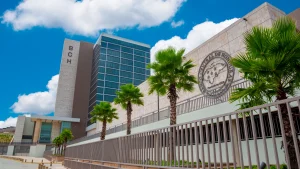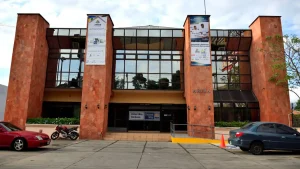Customs Union between Honduras and Guatemala

The Customs Union of Honduras and Guatemala is a historical and transcendental event in the Central American isthmus, whose countries that comprise it have been seeking economic integration since the 60’s of the last century.This represents a milestone on the path of integration, but it is also a reliable example of the political will of two peoples to improve the living conditions of their citizens, creating new schemes to facilitate the free movement of goods and people.
This fact breaks the paradigm that Central America is not capable of uniting and integrating like other regions of the world, however, it is viewed with suspicion by the rest of the Central American countries, who with curiosity are already analyzing the imminent need to adhere to the initiative.

Details about what the Customs Union represents for both countries:
- Honduras and Guatemala will represent the largest economy in Central America and the seventh in Latin America with a GDP of approx.of USD $ 84 Billion.
- They will make up a market of 24 million people, approx.53% of the total population of Central America.
- Given that they become a single customs territory, this will be 221,381 square km, approx.44% of the total Central American territory.
Progress of the Customs Union
- Concentration of customs authorities in the same integrated border post, for which procedures have been standardized, allowing means of transport to make a single stop at the Integrated Border Post.
- Carrying out joint physical inspections between customs authorities and other control authorities, reducing the number of physical inspections of merchandise.
- Decrease in customs clearance times.
- Reduction of the transit time of international transits with the implementation of the border crossing control computer module in the Trade Facilitation Centers of the Integrated Border Posts.
- Mandatory implementation in March 2018 of the Single Central American Invoice and Declaration for the transfer and acquisition of goods in free circulation between both countries.
Advantage
- Greater facilitation in trade operations between the two countries, considering that around 75% of trade will enjoy free circulation.
- Reduction in logistics costs of goods.
- Increased trade flow and expansion of markets between the two countries (considering that both countries have approximately 51% of the people of productive age in the Central American region).
- Reduction of paperwork and bureaucratic requirements in the trade of goods that enjoy free circulation.
- Implementation of the electronic document (FYDUCA) for the trade of goods that enjoy free circulation.
- Reduction in the transport times of goods with free circulation, as a result of the decongestion of the border crossings between both countries.
- Generation of logistics chains by simplifying procedures.
- Greater supply of products at lower costs for consumers in both countries.
Legal Basis
- General Agreement on Tariffs and Trade (GATT) of the WTO.
- General Treaty of Central American Economic Integration.
- Guatemala Protocol.
- Framework Agreement for the Establishment of the Central American Customs Union.
- Agreement on the Compatibility of Internal Taxes.
- Enabling Protocol for the Deep Integration Process towards the Free Transit of Goods and Natural Persons between the Republics of Guatemala and Honduras.
- General Framework of the Works for the Establishment of the Customs Union between the Republic of Guatemala and the Republic of Honduras.
- Resolutions issued by the Ministerial Instance
The customs union of Honduras and Guatemala is a historical and momentous event in the Central American isthmus, whose countries that comprise it have been seeking economic integration since the 60’s of the last century.This represents a milestone on the path of integration, but it is also a reliable example of the political will of two peoples to improve the living conditions of their citizens, creating new schemes to facilitate the free movement of goods and people.
This fact breaks the paradigm that Central America is not capable of uniting and integrating like other regions of the world, however, it is viewed with suspicion by the rest of the Central American countries, who with curiosity are already analyzing the imminent need to adhere to the initiative.Let’s go to some numbers about what the customs union represents for both countries:
- Honduras and Guatemala will represent the largest economy in Central America and the seventh in Latin America with a GDP of approx.of USD $ 84 Billion.
- They will make up a market of 24 million people, approx.53% of the total population of Central America.
- Given that they become a single customs territory, this will be 221,381 square km, approx.44% of the total Central American territory.
Important concepts of the Customs Union
The following concepts of this union are identified, which make the difference in customs processes and which will govern the form of merchandise transit between these countries:
FYDUCA (Invoice and Single Central American Declaration)
It is the legal and electronic document that declares the nature of the merchandise, protects free transit and calculates the taxes to be paid.
SINGLE CUSTOMS TERRITORY
It represents the entire geographical extension, in which this customs union has jurisdiction.(The entire territory of Honduras and Guatemala)
PERIPHERAL CUSTOMS
Place of land, sea or air control authorized for the operations of entry or exit of merchandise to or from a State Party, where uniform legislation and procedures are applied for the clearance of merchandise.The ministerial body (IM) designated as peripheral Customs on the Honduran side:
- Guasaule, Choluteca
- The Table, San Pedro Sula
- Fraternity, Paradise
- The Amatillo, Valley
- Puerto Cortes, Cortes
On the Guatemalan side:
- Puerto Barrios
- St Thomas
- Puerto Quetzal
- Tecun Uman II
- Carmen
INTEGRATED BORDER POST (PFI)
Places located on the border that divides Guatemala and Honduras, where the authorities of both countries will exercise integrated functions and are composed of the following:
- Trade Facilitation Center (CFC)
- Control Center (CC)
The ministerial instance (IM) designated as PFI’s the following.customs:
- Hot water
- The Florid
- Between rivers
What are Integrated Border Posts?
They are places located on the border that divides Guatemala and Honduras, where the authorities of both countries will exercise integrated functions in a single building and are made up of:
- Trade Facilitation Center and;
- Control Center By agreement of the two countries these are located on the side of Honduras being these:
- El Florido, Agua Caliente and Corinto
What are Peripheral Customs?
They are places of land, sea or air control authorized for the operations of entry or exit of merchandise to or from a State Party, where uniform legislation and procedures established in the Union regulations are applied for the dispatch of merchandise.
In Honduras:
- Puerto Cortés, La Mesa, La Fraternidad, El Amatillo and Guasaule.
In Guatemala:
- Tecún Umán, Puerto Barrios, Santo Tomás de Castilla, Puerto Quetzal and El Carmen.
The authorization of three of the aforementioned peripheral customs has been prioritized:
- Puerto Cortes, Guasaule and Tecun Uman.
Accession of El Salvador
After the official accession of El Salvador to the Customs Union of Honduras and Guatemala, on August 20, 2018, it is worth remembering how it works and being able to learn about its main concepts and processes.
Main processes of free transit of goods
The process of generating the FYDUCA is initiated by the organization (company) of the transferring state, – that is, the one that sends the merchandise – on the website of the tax authority (TA), in the case of Honduras it is: www.sar .gob.hn and for Guatemala www.sat.gob.gt.The process works like this:
- The transferor must enter the system of the corresponding TA, validating his entry with username and password.
- Go to «Virtual Agency»
- Look for the FYDUCA generation option in the AT system.
- Fill out the FYDUCA, and print the document.
- The acquiring organization must enter the TA system (acquiring), validating its entry with username and password.
- Go to «Virtual Agency».
- Look for the payment ticket generation option in the TA system.
- Make payment online..
Exceptions to the free transit of the customs union
The member states of this customs union defined a list of products to be exempted from the figure of free transit, considering them as sensitive products, based on aspects such as food safety, prices, competition, national security;among others, related to the characteristics of commercial exchanges between their respective economies.
The foregoing means that these products must meet the requirements and go through the natural export or import process, according to the ordinary procedures established in the Central American Uniform Customs Code and its Regulations.Its circulation will be through the PFI (Integrated Border Posts).
The agricultural products exempted from free transit, within the framework of this customs union are:
- Live animals: bovine, pig and rooster or hen
- bovine meat;pork meat, offal and bacon;chicken or rooster meat
- Dairy, dairy substitutes and ice cream
- Eggs
- Vegetables: Potatoes, onions and beans
- Yellow corn and white corn
- Rice and rice flour pellets
- Corn flour and grits
- Vegetable oils
- Sausages and meat preparations
- Preparations for infant feeding
- juices and nectars
- Mother yeasts, live
- Beer
- Wine grape
- Fermented drinks
- Ethyl alcohol
- Spirits and other spirituous beverages
- Dog and cat food
- Tobacco and its products
- unroasted coffee
- cane sugar
- Sugar with added flavoring and coloring
- Other sugars and chemically pure sucrose
Other important products, excepted from free transit are:
- Cement
- Petroleum derivatives
- Medicines for human and veterinary use
- Fertilizers (fertilizers)
- Retreaded or used tires
- Used footwear;clothing and other clothing, used
- Sheets, bars and profiles of iron or steel
- Tractors, vehicles to transport 10 or more people;tourism and passenger vehicles, including family-type vehicles;Vehicle for Transportation of Merchandise;vehicles for special uses;vehicle chassis;vehicle parts;wheelbarrows;motorcycles and tricycles;bicycles and parts for motorcycles and bicycles.
To know the complete list of exempted products, refer to IM-UA Resolution 09-2017.
What Honduras and Guatemala have achieved
According to information collected by SIECA, some of the achievements of this Customs Union until August 2018 are:
- 55% of trade operations between Honduras and Guatemala have been made with FYDUCA.
- 28,028 FYDUCA’s have been registered with almost half going through the Corinto PFI.
- Customs transit times have been reduced from 6 to 55 hours to 10 to 15 minutes (World Bank measurements).
What is expected from the accession of El Salvador
The recent official adhesion of El Salvador to this Customs Union, strengthens the hopes of the long-awaited Central American economic integration.Here are some key figures that describe the potential of the customs union:
- GDP USD $123,364.80 – 48.1% of the region
- Territory of 242,020 km2
- Market of 31.9 million people
- Exports for USD $ 6,518 Million – 69.1% of the intra-regional market
With the incorporation of El Salvador, 6 PFIs are added, 2 for Honduras and 4 for El Salvador, making 9 in total in the Customs Union:
- El Poy, Honduras
- Amatillo, Honduras
- Anguiatu, El Salvador
- Chinamas, El Salvador
- San Cristobal, El Salvador
- Hachadura, El Salvador
12 peripheral customs in the Single Customs Territory:
- 5 maritime customs
- 3 air customs
- land customs
advances
- Follow-up to the Roadmap for the accession of El Salvador.
- The operating schemes of the Integrated Border Posts have been defined:
a) In transition
b) Definitive - The normative proposal in the Regulations for the Operation of the Customs Union is under review, considering the accession of El Salvador.
Next steps
- Approval of the modification of resolutions issued by the Ministerial Instance for the Accession of El Salvador.
- Adequacy of the physical infrastructure of the PFIs.
- Preparation of a transfer plan for customs officials to the Integrated Border Posts and Peripheral Customs.
Regulatory framework
In consideration of the aforementioned background, during the Official Visit to the Republic of Honduras of the President of the Republic of Guatemala, the Presidents of both countries instructed the Ministers responsible for regional economic integration to define actions that allow the implementation of the union bilateral customs in the framework of the Central American Economic Integration Subsystem.This mandate is reaffirmed in the Declaration of Heads of State and Government of the Countries that make up the Central American Integration System at the XLIV Meeting held in Placencia, Belize on December 17, 2014.
In order to establish the legal framework that allows the establishment of the Customs Union in a gradual and progressive manner, on April 10, 2015 in Panama City, Panama, the Enabling Protocol for the Deep Integration Process towards the Free Transit of Goods and of Natural Persons between the Republics of Guatemala and Honduras.
Related
- Honduran Customs
- Obligations and Benefits when traveling to Honduras
- Administración Aduanera de Honduras




